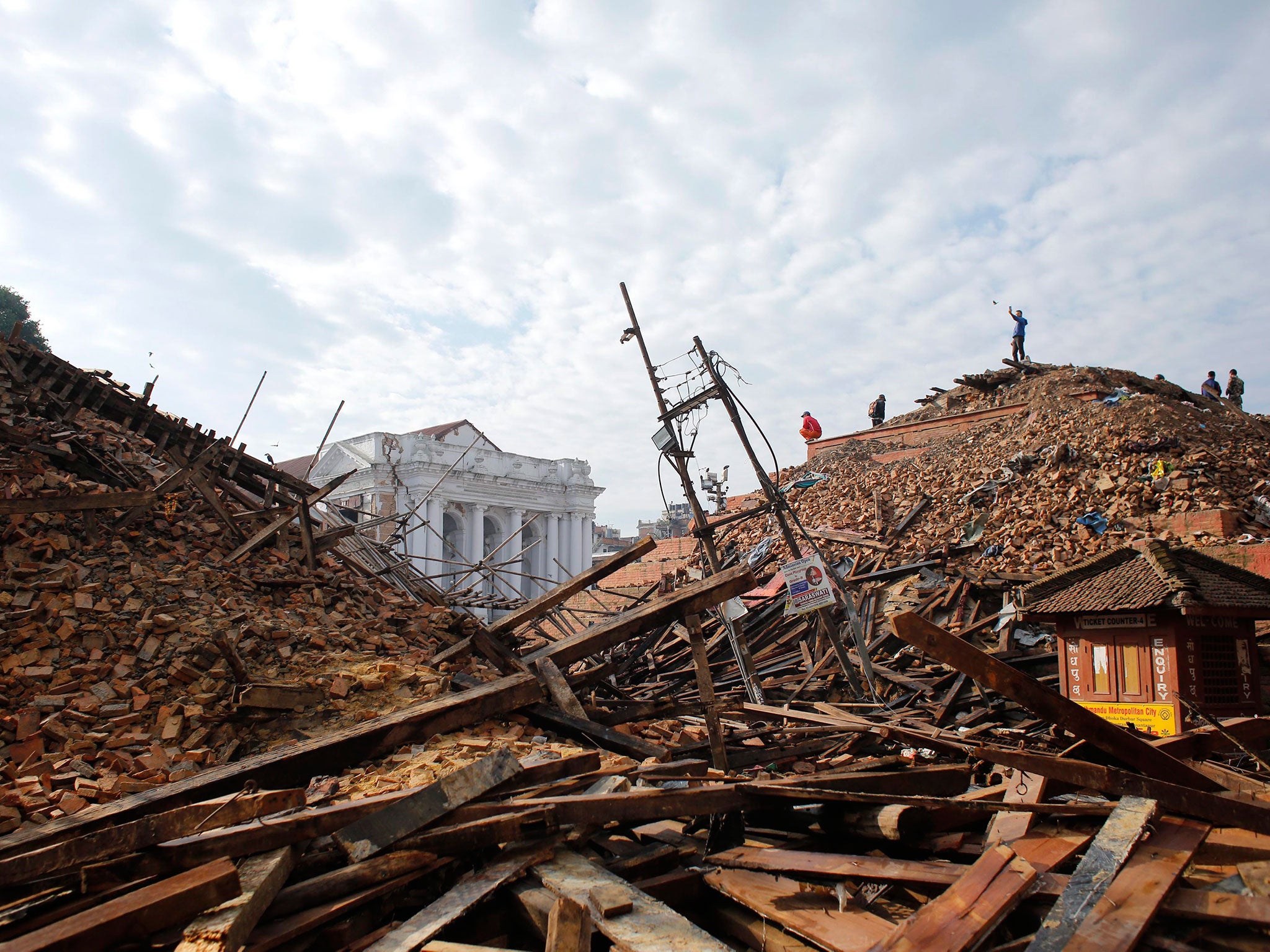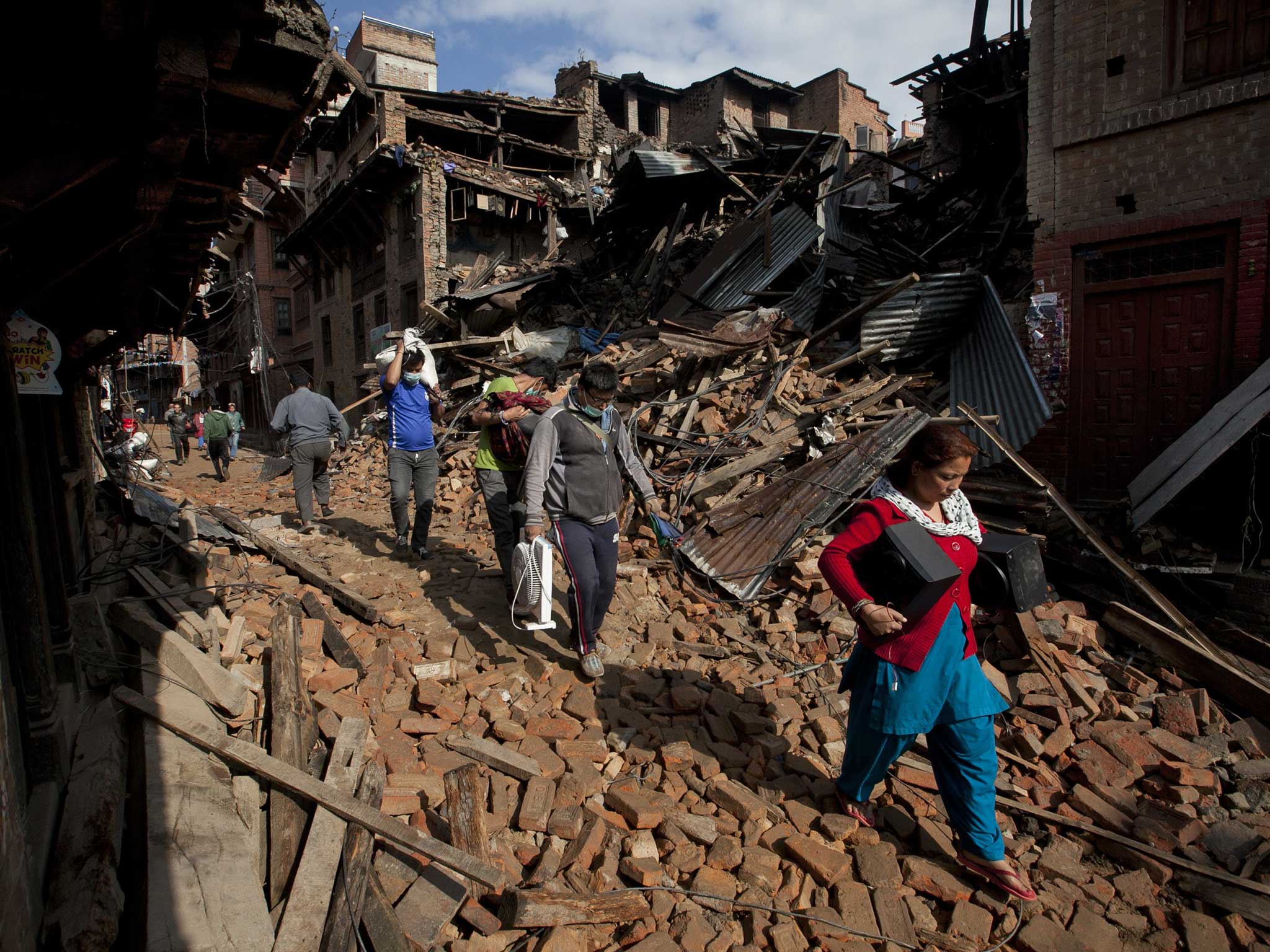Nepal earthquake: What can be done to prevent similar disasters in the future?
Forecasting earthquakes is of little use for day-to-day planning - what people need is an early-warning system similar to Hurricane notices

It is notoriously difficult to predict an earthquake, although the science has reached a stage where it may be possible to give some kind of reasonable assessment of risk for a given, well-studied location within a seismically-active region.
Earthquakes generally occur on a geological fault line where vast masses of rock grind against each other with the slow, tectonic movement of the Earth’s crust. Occasionally this movement gets stuck, leading to a build-up of stress and energy, which can be suddenly released in an earthquake.
Because of the inherent “non-linearity” – or unpredictability – of tectonic movements, geologists like to distinguish between earthquake forecasting, where they give a probabilistic assessment of the risk in a specified area over a certain period, and a “deterministic prediction” or a statement of when and where an earthquake will happen.
Forecasting is of little use for day-to-day planning. No city could be evacuated, for instance, on a risk assessment that gives a 20 per cent probability of an earthquake occurring in the next few years. What people need is an early-warning system similar to Hurricane notices, which give high probabilities of something occurring within a reasonably short time period, and at a well-defined location.
Unfortunately, although the science of earthquake forecasting is quite advanced, it is nowhere near the stage of reaching a deterministic prediction. For this to happen, seismologists need to find something that reliably happens in a small window of space and time before the earthquake strikes – in other words a “diagnostic precursor”.
“So far, the search for diagnostic precursors has been unsuccessful. Most geoscientists do not believe that there is a realistic prospect of accurate prediction in the foreseeable future, and the principal focus of research is on improving the forecasting of earthquakes,” according to the Geological Society.

Only about 10 per cent of large earthquakes are preceded by smaller foreshocks. It is also hard to distinguish between genuine foreshocks of something much bigger, from background seismic activity.
One approach to forecasting is to try to identify so-called “seismic gaps” along a fault where earthquakes have not happened as often as on other parts of the same fault line.
This might suggest that stress is building up and a “big one” is due. But even with the most actively monitored sites in the world, such as the San Andreas Fault in California, a significant earthquake occurring within a seismic gap can still happen at just about any time in the future – which is hardly useful information for planning purposes.
It is nevertheless possible to issue limited earthquake warnings within a few seconds of a quake based on the transmission of so-called p-wave signals or ground vibrations emanating from an epicentre. This requires a good network of seismic stations and is the basis of the Earthquake Early Warning system in Japan, which issues warnings via smartphones with just enough time to duck under an office desk.
Accurate predictions to evacuate cities have however been made in the past. The best example occurred in 1975 in China, based on changes to groundwater levels the day before a magnitude 7.3 earthquake – which saved an estimated 150,000 lives.
Unfortunately, a year later more than 250,000 Chinese died when an earthquake struck with no warning at all.
Join our commenting forum
Join thought-provoking conversations, follow other Independent readers and see their replies
Comments